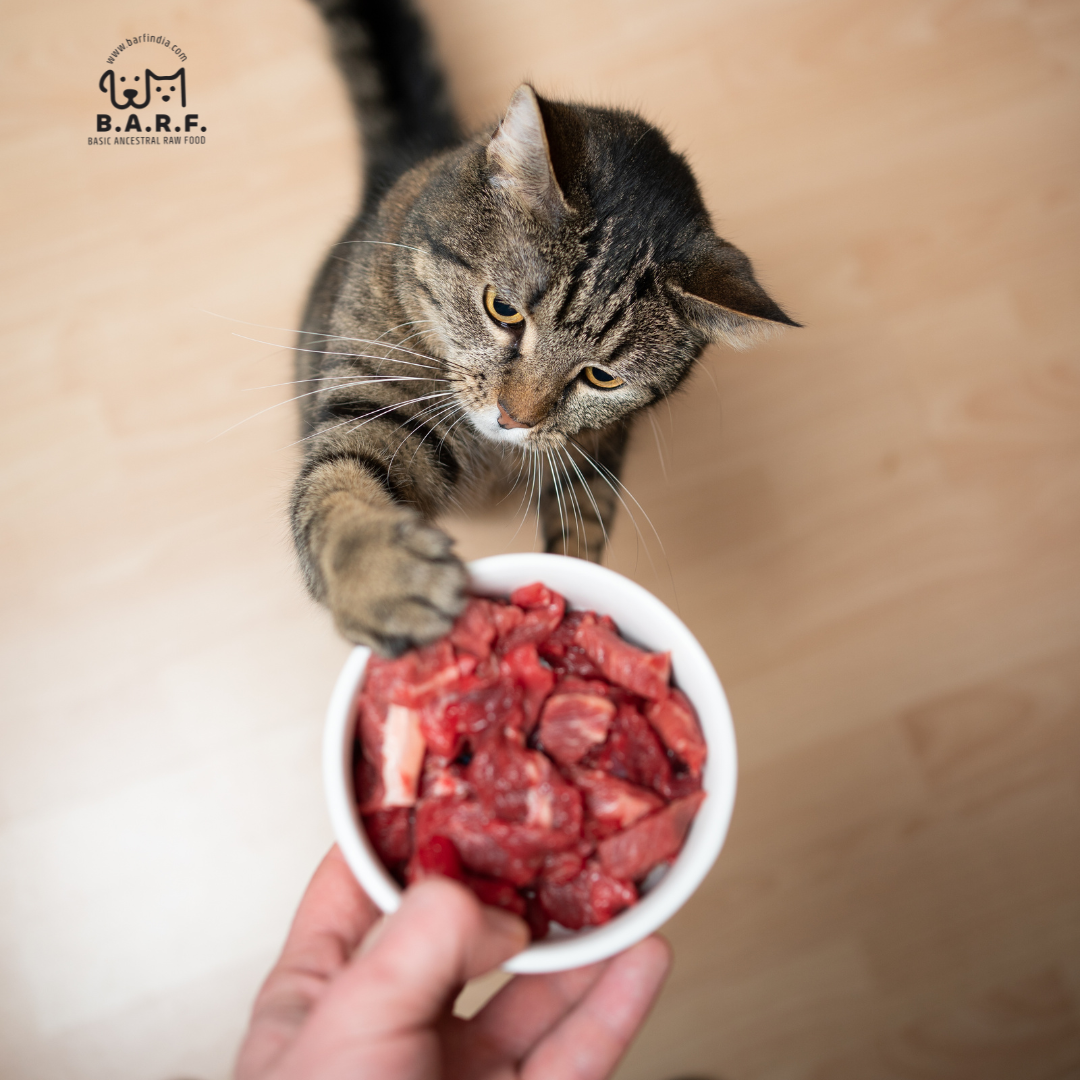
Is Your Cat Not Eating? | Feeding Tips for Fussy Cats.
Share
Cat Not Eating? Key Takeaways and Solutions
If your cat, typically a good eater, suddenly stops eating, the first step is to visit the vet after 24 hours to ensure they aren't unwell. Several reasons can contribute to a cat’s reluctance to eat, including illness, stress, eating elsewhere, or their food bowl being too close to their litter tray.
Tips to Encourage Your Cat to Eat:
-
Stimulate Their Prey Drive: Engage your cat’s natural hunting instincts before meals. Let them chase a toy and finish the game near their food bowl to boost their appetite.
-
Choose Nutritious Food: Select high-quality, grain-free cat food with diverse protein sources. This ensures the food is both nutritious and appealing.
-
Add Tasty Toppers: Enhance your cat’s meal with delicious toppers to make it more enticing.
-
Understanding Their Behavior: Cats are naturally suspicious of new foods and appreciate variety. Our guide to cat behavior can help you better understand your feline friend.
-
Rotate Protein Sources: Regularly changing protein sources can keep your cat interested. Our raw cat food offers a variety of proteins, such as chicken & salmon, lamb & duck, and turkey & chicken.
-
Temperature Matters: Cats prefer their food at the same temperature as prey, which is also optimal for releasing appetizing aromas. Warm your cat’s meal to body temperature for the best results.
Top 5 Tips to Get Your Cat Eating Again:
-
Find the Right Feeding Location:
- Cats like quiet and private areas for eating.
- Ensure the eating area is free from disturbances like children, loud appliances, or other pets.
- Place their bowl where they can have a 360-degree view.
-
Select the Right Feeding Surface:
- Many cats dislike plastic. Use wooden, glass, or ceramic plates.
- Use a flat surface to avoid their whiskers touching the sides.
- Keep the feeding area and dishes clean, avoiding strong detergents.
-
Optimal Feeding Times:
- Cats are crepuscular, meaning they are most active at dawn and dusk.
- Feed them early in the morning and late at night.
-
Get the Temperature Right:
- Warm their food to body temperature by placing it in a bowl of hot water.
- Alternatively, add warm water or bone broth to their food.
-
Play Before Meals:
- Engage in a vigorous play session before feeding to stimulate their hunting instincts and appetite.
Additional Tips for Fussy Cats:
- Treats and Toppers: Add natural, dehydrated treats, sardines, or raw egg to make meals more appealing.
- Sprinkle Catnip: If your cat enjoys catnip, sprinkle a little over their food.
- Variety: Switch protein sources regularly to maintain their interest in food.
Understanding Why Your Cat Isn’t Eating:
- Health Issues: Dental pain, ulcers, kidney problems, or obstructions can cause a loss of appetite. Visit the vet to rule out these issues.
- Sense of Smell: Cats rely heavily on their sense of smell. Blocked noses due to allergies or flu can affect their appetite.
- Stress: Changes in the environment, new pets, or new neighbors can stress cats, affecting their eating habits.
- External Food Sources: Outdoor cats might be hunting or eating elsewhere.
- Seasonal Changes: Cats might eat less during certain seasons.
Feeding Tips for Fussy Cats:
- Separate Food and Water: Keep their food and water dishes apart.
- Avoid Plastic Dishes: Use glass, ceramic, or wooden plates.
- Stress-Free Mealtimes: Ensure a calm environment during meals.
- Room Temperature Food: Serve food at room temperature for the best taste and aroma.
Best Food for Fussy Cats:
- High Nutrition: Choose bioavailable, grain-free food with diverse protein sources.
- Appealing Taste: High-quality ingredients ensure the food smells great and tastes delicious.
For more personalized advice, our expert cat behaviorist Cosme is available to help you understand and address your cat’s eating issues. Contact us for more support.
